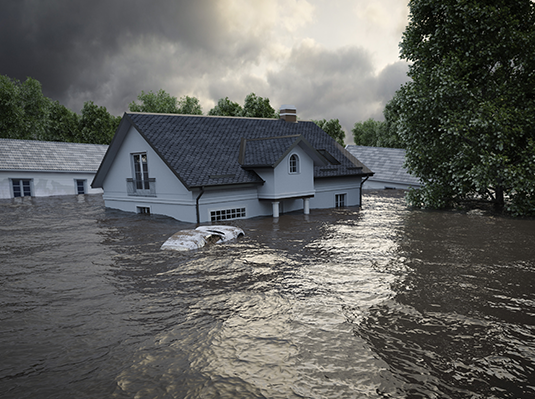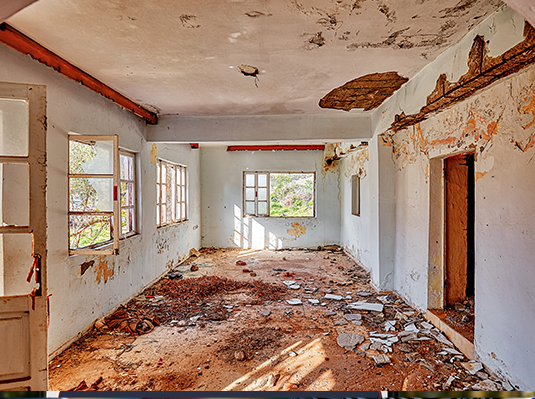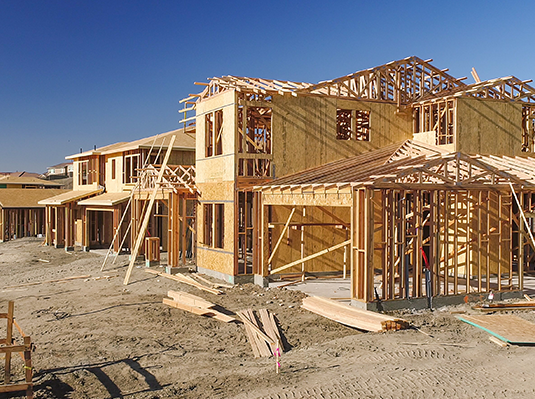
Has there been a flood in your neighborhood? Maybe you are dealing with unexpected torrential rain, or perhaps a hurricane caused flooding when it landed on the coast near your home. You aren’t worried, though, because you have a homeowners insurance policy to protect your property, right? Unfortunately, if you don’t have flood insurance you are about to find out the hard way that some things aren’t covered by your homeowners insurance and flood damage is one of them.
Who needs flood insurance?
Realistically, everyone should have flood insurance. Even people who live in places where floods are rare are still at risk and the damage a flood can cause is significant — just one inch of flood water can cause up to $25,000 in damages to your property.
Everyone has some risk of flood, but whether your home is in a high risk or low risk is determined by your flood zone.
What is a flood zone?
A flood zone is an area that could potentially be covered by water in the event of a flood. Citizens living in high risk flood zones are required by federal law to have flood insurance to protect their property. People in low risk flood zones are not required to have a flood insurance policy, but keep in mind that 20% of all flood claims come from low to moderate flood zones, so these areas are not always safe from damage.
What does a flood insurance policy cover?
Depending on the policy you choose, flood insurance covers household and property damage caused by flooding, including damage to:
Electrical and plumbing systems
- Furnaces
- Water heaters
- Refrigerators
- Built-in appliances like dishwashers
- Permanently installed carpeting
- Permanently installed cabinets and bookcases
- Foundation walls
- Staircases
- Detached garages
- Fuel tanks
- Well water tanks and pumps
- Solar panels
- Personal belongings (clothes, furniture, etc.)
- Washer and dryer
Are there flood insurance requirements?
When the National Flood Insurance Act of 1968 was passed it required states to participate in the flood insurance program and follow certain procedures to help prevent losses caused by flooding. The Flood Insurance Protection Act of 1973 stated that banks and financial lenders must require homeowners to purchase flood insurance as a condition of their loan if they live in a high risk flood zone.
Additional laws regarding flood insurance have been passed in the years since, but these two laid the groundwork for flood insurance as we know it today. The National Flood Insurance Program (NFIP) provides coverage for up to $250,000 for your home and $100,000 for personal possessions, so people who need more coverage than the NFIP offers should reach out to our experts at Goosehead Insurance to learn about all of their coverage options.
Are there different types of flood insurance?
Flood insurance is typically broken into two parts, dwelling coverage and contents coverage. Just like your homeowners insurance policy, the dwelling coverage insures the physical structure of your home. Your floors, walls, roof, foundation, and other physical portions of your house would all be covered under the dwelling portion of a flood policy.
Contents coverage would cover all of your belongings, from books to clothes to major appliances. You can purchase both types of flood coverage or just one if you feel like that is the right decision for you. People living in high risk flood zones don’t have a choice, however, and must purchase both types of flood insurance.
There are private insurance companies that offer flood insurance as well. Companies that offer private flood insurance sometimes offer additional flood coverage, such as:
- Additional living expenses
- Other structures
- Auto coverage
What is flood mapping?
The Federal Emergency Management Agency (FEMA) uses a flood insurance rate map to determine your risk of flooding. These maps show whether a home or property is in a high risk, moderate risk, or low risk area, allowing insurance companies to determine your rates and whether or not you are required to buy flood insurance.
FEMA has created an online map system that allows you to put in your address to determine the level of flood risk in your area, which can be helpful when shopping for homeowners insurance or flood coverage.
How can I find the right flood insurance for me?
If you are still having difficulty understanding flood insurance you are not alone. Flood insurance is complicated and many people don’t think about it until it is too late. Since all flood insurance policies come with a 30-day waiting period before the coverage is effective, it is vital for homeowners to sign up before they think they will need the coverage.
Using the FEMA online map system is an excellent first step to determining your risk level. You should also look at the history of your property to determine if there has ever been a flood that damaged your home. You should also consider how much flood insurance you might need and how much you can afford to spend on a flood insurance policy. Once you have that information you can work with an insurance expert to discuss your needs and choose the flood insurance policy that is right for you.
The contents of this article are for informational purposes only. You should not act or refrain from acting based on this information without first consulting a Goosehead licensed agent at [email protected]. We disclaim all liability for actions taken or not taken by you based on the contents of this article which is provided "as is." Goosehead makes no representation that this content is error-free.


